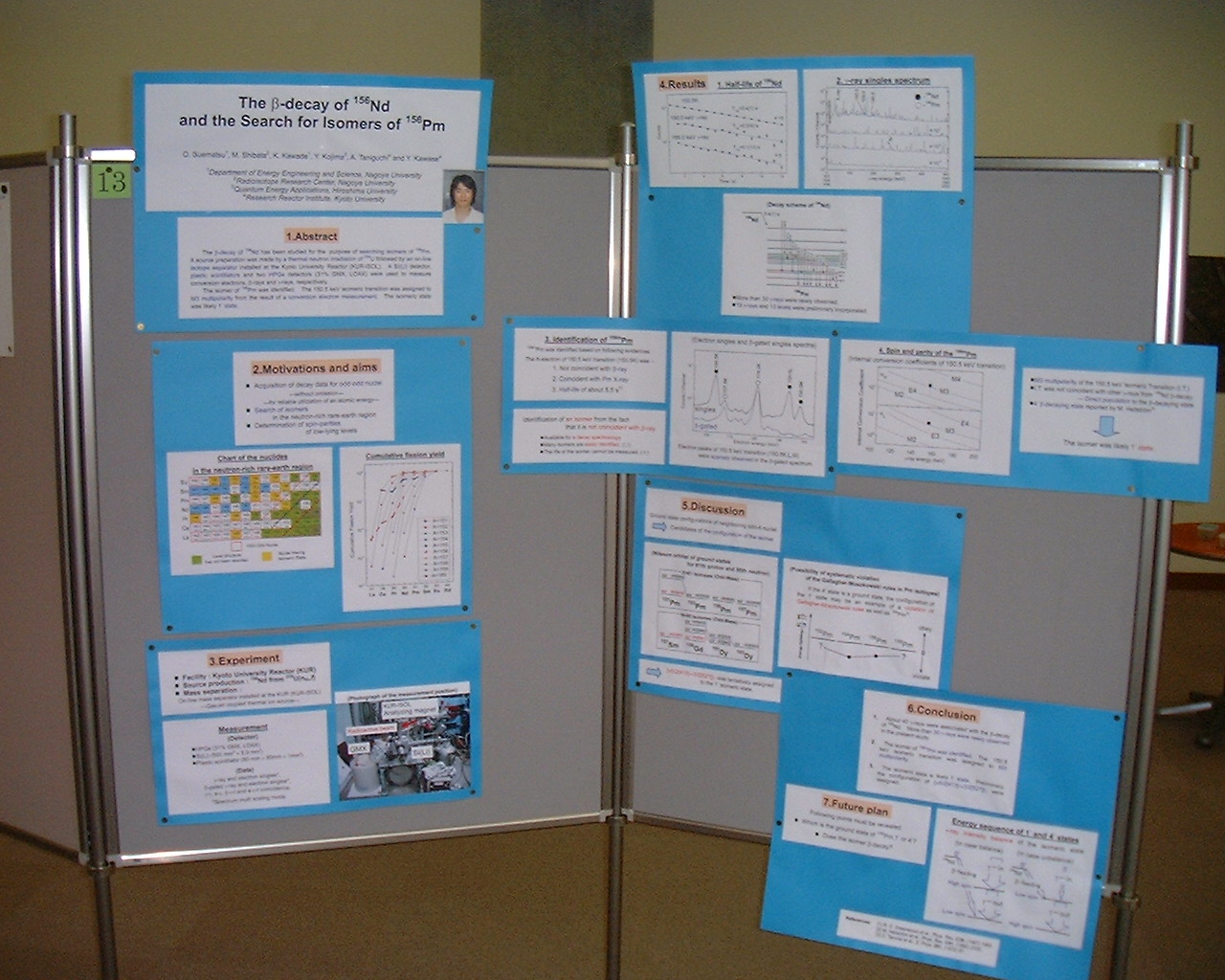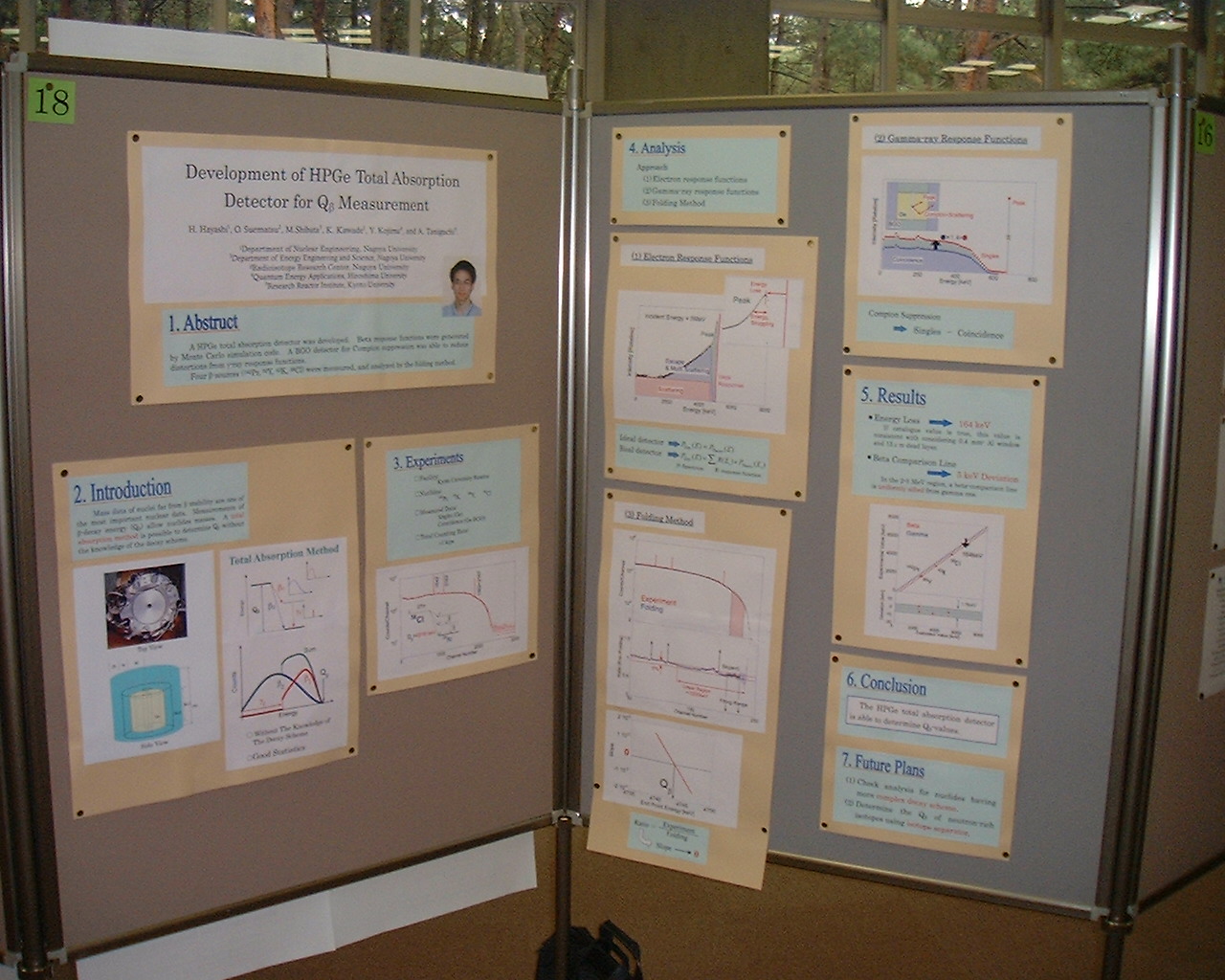Identification of 156mPm
through the b-decay of 156Nd

The b-decay of 156Nd has been studied for the purpose of searching isomers of 156Pm. A source preparation was made by a thermal neutron irradiation of 235U followed by an on-line isotope separator installed at the Kyoto University Reactor (KUR-ISOL). A Si(Li) detector, plastic scintillators and two HPGe detectors (GMX, LOAX) were used to measure conversion electrons, b-rays and g-rays, respectively.
The isomer of 156Pm was identified. The 150.5 keV isomeric transition was assigned to M3 multipolarity from the result of a conversion electron measurement. The isomeric state was likely 1- state.

